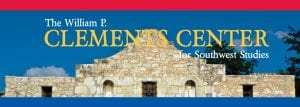During this past Spring semester, I assisted Dr. Brian Franklin with his survey course on Texas history. It was an excellent experience. The guidance Dr. Franklin imparted was invaluable. He is a model for how to lead a fun and engaging historical survey. Not only did I gain valuable skills from his example, but his willingness to allow me to lead discussion sections and give lectures in class gave me a head start for when I go to create my own syllabi on Texas history. Through Dr. Franklin’s lectures and guidance, as well as my own research in building lectures and discussion exercises, I came to the unequivocal understanding that regional history is global history. I also found that functionally, regional histories offer broad appeal to students through their recognizability and clear demonstration the historian’s craft. Teaching Texas history has offered me an even more positive perspective of regional history than I previously had.
Throughout its history, Texas has been a transnational space. Prior to European contact, indigenous groups migrated into and out of the region competing for trade, space, and natural resources. European attempts to settle Texas created even more contestation over the region as the Spanish and French entered into the already complicated competition over territory. After Mexico gained its independence, the new nation attempted to open Texas for the Atlantic World. Through the empresario system, Mexico contracted with independent agents to promote migration to Texas from Europe and North America. Ultimately, the empresario system drew in thousands of Anglo-Americans from the U.S. South who rebelled against Mexico in order to maintain their own notions of Jacksonian democracy and African chattel slavery. They established the Republic of Texas which became a hotbed of international intrigue and diplomacy that drew in the English, French, United States, and several German principalities. Those diplomatic struggles, particularly over the issues of the cotton trade and African chattel slavery, continued after Texas annexation to the United States and re-engulfed the Atlantic World during the U.S. Civil War. Transnational contestation in Texas remained unceasing.[1]
By the twentieth century, Texas became a place where global conflicts played out. The confluence of the Mexican Revolution, increasing ethnic violence, and the Zimmerman Telegram pushed Texans to support the U.S. entering World War I. Oil speculations and the rising oil and gas economy in Texas helped dictate world economies and American foreign policy. Furthermore, the United States fought portions of the Cold War through Texas. Texas Instruments contributed to U.S. military technology to help build a vast American nuclear arsenal. Religious leaders based in Texas, like Billy Graham, developed theologies to combat Soviet atheism. The world moved in and out of this one region in the middle of North America.[2]
In all of these examples showing how Texas was tied to the globe, teaching Texas history allows for various historical perspectives. Not only can one teach the subject from the points of view of Spain, Mexico, England, the Soviet Union or OPEC, Texas history promotes indigenous, African American, Mexican American, and various gendered perspectives. There is something in this regional history for everyone. Students can certainly find something to latch onto, something meaningful to them.

Even though Texas history is global, it remains a regional history with a limited geographic space that allows students a greater ability for analytical development and to better understand the historian’s craft. Dr. Franklin demonstrated this perfectly through a newspaper project that each student submitted individually. The assignment took place in stages and encouraged students to interact with primary sources throughout the semester. Students chose two separate Texas newspapers within a 3-month period between 1850-1877. They read four editions of each newspaper within their chosen timeframe and identified four topics that stood out to them as either being particularly significant or just interesting. Finally, they drew out the topic that they found most engaging and wrote a final report based on their primary sources and select secondary sources. Students wrote about a vast array of topics from slavery, to the Civil War, to railroad development, to border conflicts, to fashion. I thought the newspaper project a wonderful exercise for students to grasp the significance of Texas history and to learn how historians develop ideas.
I gained so much essential experience in my assistantship with Dr. Franklin. He included me in the early design phase of the course where we discussed possible readings and assignments for the students. We shared in the grading and student advisement. He also generously shared his lecture slides and notes when I got stuck on how best to frame a lecture. Perhaps most importantly, I learned in Dr. Franklin’s course how to construct a survey on a regional history that draws out its global implications.
[1] Randolph B. Campbell, Gone to Texas: A History of the Lone Star State, Third edition (New York ; Oxford: Oxford University Press, 2018); Randolph B Campbell, An Empire for Slavery: The Peculiar Institution in Texas, 1821-1865 (Baton Rouge: Louisiana State University Press, 2009); Jesús F. de la Teja, Paula Mitchell Marks, and Ronnie C. Tyler, Texas: Crossroads of North America (Boston: Houghton Mifflin Co, 2004); David J. Weber, The Spanish Frontier in North America (New Haven: Yale University Press, 2009).
[2] Patricia Bernstein, The First Waco Horror: The Lynching of Jesse Washington and the Rise of the NAACP (College Station: Texas A&M University Press, 2006); H. G Bissinger, Friday Night Lights: A Town, a Team, and a Dream. (Boston: Da Capo Press, 2015). Campbell, Gone to Texas; de la Teja, et. al, Texas: Crossroads of North America.



